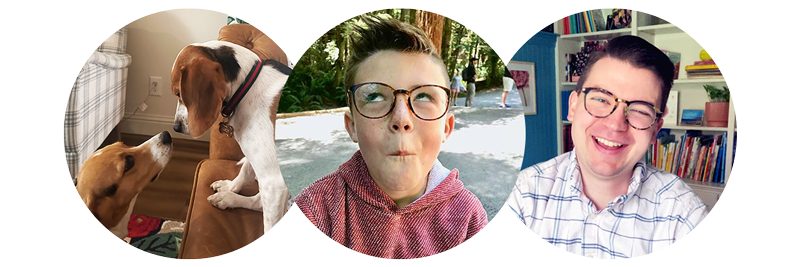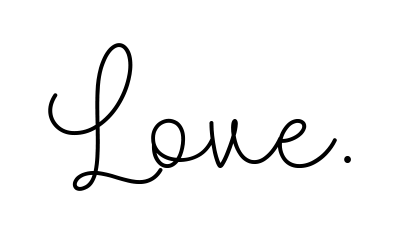Royalties & Author Copies
When are royalties paid?
We pay royalties twice a year, so the year is split into two periods: January through June, and July through December. Royalties from the first half of the year are paid in September, and royalties from the second half of the year are paid in March the following year.
Why is there a reserve on my royalties?
We often place a small reserve (between 10-30%, depending on the title) on royalties to offset for possible returns. This is to help prevent your royalty account from entering negative territory if large returns were to come in. For example, if you earned $1000 in royalties for sales to bookstores one period, but a third of those books were returned to us by those stores the next period, you would then technically owe us $333 from those returns. By placing a small reserve the first period, it helps prevent that from happening. Reserved royalties are released and paid the next period.
How do royalties on foreign rights work?
When we sell foreign rights, they're usually sold one of two ways: an advance with royalties, or as a co-edition publication. Here's how each one works.
Advances with royalties:
- The foreign publisher pays an advance up front to acquire the rights to your book for their language.
- We pay you a percentage of that advance based on your contract (usually called "translation rights" or sometimes "subsidiary rights") minus agent fees and costs. Your portion of the advance is paid during the period that the advance is actually received.
- If the advance is earned out and the book continues to sell for the foreign publisher in their language, we'll earn additional royalties from the publisher for those sales. You'll earn your contracted portion of those royalties just like you did on the advance, and that will be paid during the period that the foreign royalties are received.
By way of example, if we sell your book to a German publisher for $2000 and your contracted royalty rate on language translations is 25%, you'll earn around $500 from the initial sale, plus additional royalties if the advance is earned out later.
Co-editions:
Sometimes, several foreign publishers join together to print one large run of a book in several languages (say, French, German, Romanian, and Norwegian). This is called a co-edition, and it reduces print costs considerably for the publishers, especially if they're smaller languages that need small quantities.
When this happens, instead of paying an advance up front, the foreign publisher pays a per unit fee for each copy they produce in the group. Usually, this fee is our print cost plus a certain percentage of profit.
For these deals, we pay our authors and illustrators their usual translations rights portion based on the profit piece of the deal. So if a publisher produces 3,000 copies of your book and pays us $4 per book, our print costs are $2.50, and your contracted translation rights percentage is 25%, you'll earn 3,000 X (4-2.50) X .25 = $1,125 on that edition.
How do royalties on sales from bushelandpeckbooks.com work?
As you may know, we've worked hard to develop an extra sales channel through bushelandpeckbooks.com. So far, it's been very successful and has sold thousands and thousands of extra books! However, these sales do come with costs. Digital advertising, e-commerce development, and shipping easily reach into the hundreds of thousands of dollars, just like they do for any retailer. So, when a book is sold on our site, here's how we compensate for those costs when applying your royalties.
First, we take the price that your book actually sold for (this varies, because we run different promotions at different times of year, so it often isn't the full retail price—sometimes, it's even been free). Then, we apply a 50% discount to that price. This discount is similar to what other retailers like Barnes & Noble receive to offset their costs. The remaining amount is what your print royalty rate is applied to. By way of example, if your book retails for $18.99 but a customer used a 20% coupon, the sale price of the book would be $15.19. Then, 50% applied to that would be $7.60. A 10% royalty applied to that would be $0.76.
That royalty is on par with what you receive from books sold to other retailers. For example, if we sold the $18.99 book to Barnes & Noble, they'd take about 50% off—so $9.49—plus an additional 24% from our distributor—down to $7.21—so your 10% royalty on that book would be $0.71.
Some publishers include all advertising costs in a book's net to calculate royalties. We've looked at that, but it would actually result in a 33% drop in direct-sales royalties being paid out to you, so we like our method better.
When will I receive tax documents for my royalties?
If you earned more than $600 in royalties during the year, you'll receive a 1099-MISC from us. These will be sent to you digitally through a tax service called Tax1099.com. 1099s are supposed to be issued by January 31.
When will I receive my author / illustrator copies?
Complimentary copies are usually shipped as soon as your book becomes in stock. If you still haven't received your author copies 30 days after the book has published, please contact Nic (nic@bushelandpeckbooks.com) for help.
Publication
When will my book be published?
The publishing industry works on a rotating calendar of seasons. Some publishers do three seasons of books every year while others do two. Our distributor sells two seasons every year (fall and spring), so we follow their schedule. Our fall season comprises all books that release during September through February. Our spring season includes all books that release during March through August.
Currently, we acquire books as far as two to three years in advance. We often have a particular season in mind when a book is acquired, though this can change as we develop each season and look for a balance in topics, book formats, price points, and other variables.
Once a season is assigned, we also assign a publication month and date. You might hear this referred to as a "pub date." Pub dates frequently change at first as a season is developed, but they eventually lock in once the final season falls into place. We'll know a book's soft pub date about a year beforehand; as we get closer to publication (about 8 months before), that date firms up and is then communicated to the industry.
Sometimes, factors can alter a book's pub date. Manufacturing issues, supply chain challenges, illustration delays, etc. can all impact a pub date. If your book date changes, our author concierge will contact you immediately.
Why do I already see my book on the internet? And is that the final cover?
Because retailers often make buying decisions as early as 8 months before a book releases, we work on preparing data for each of our books a year in advance. This data includes the book title, author name and bio, book description, keywords, pub date, and other essential information that the book trade will use to stock and sell your title later on.
Data begins feeding to our partners very early. Preliminary covers (sometimes very rough drafts!), descriptions, titles, and more are sent to from our database to our distributor, who then passes it on to key partners like Edelweiss and Barnes & Noble. But this preliminary data also goes out early to other places like Amazon, which is why you might see an online listing for your book much earlier than you expected—and sometimes needing some improvement.
Don't worry :) Rest assured that Amazon and other retailers will update their data as we continue to refine your book's cover, title, bio, and other parameters. It's very normal in the industry to have provisional covers replaced with final versions once new art comes in, or titles change after a particularly enlightening phone call with an author, or the description of a book change after a marketing meeting. All these changes are sent out on a weekly basis, with those updates filtering through to retailers in a few weeks.
How does the publishing process work?
Though it can be a little different for each title, most of our books follow a process that looks something like this:
- Once your book has been acquired, we assign the book an editor. Sometimes, books need to go through a developmental edit to fix things like pacing, character development, readability, page turns, and so on. If a manuscript is in need of clean-up before going to design, we'll send it to a copyeditor as well.
- Once a manuscript is in good shape, we work on the visuals. For picture books, board books, and illustrated nonfiction titles, we search for an appropriate artist that we feel matches the tone of the book. For chapter books, we look for a cover artist that can capture the feel of the book in a single, arresting cover image—no easy feat!
- Once an artist is contracted, we have him or her start on sketches. For chapter books, we like to have artists read as much of the book as possible to get a feel for the story. For other books, we use the manuscript to create a dummy book so the artist has a sense of the layout and can start seeing the story visually.
- When sketches arrive, we pass them on to our authors and give them an opportunity to comment. These suggestions are then passed back to the illustrator, who incorporates them into new drafts for us and the authors to review.
- Once sketches are approved, illustrators are given the green light to work on final color art.
- When the manuscript and art are finally done, we move to the design stage of the book. Here, text and images are combined in InDesign to create the beautiful covers and pages Bushel & Peck is known for.
- Covers and interior pages are then exported into a PDF and sent to the author for review. They are also sent to a professional proofreader. Once changes are incorporated into the design, authors have another opportunity to review before going to press.
Making a book is a long process! But it's the process that can end up separating a great book from a good book, so we take our time, solicit feedback frequently, and work hard until everything is perfect.
Do authors get to provide feedback on illustrations or the cover?
Absolutely! We differ from many publishers in this regard, but we find that books are almost always better when authors are involved with the visuals. We don't have our authors communicate directly with the artists—we'll be your go-between—but we definitely want your feedback to make the book better.
What if there's a typo after publication?
Even the best proofreaders and publishers miss things from time to time. If you find a typo in your book, be sure to let us know. We'll make a note to fix it in the next printing.



